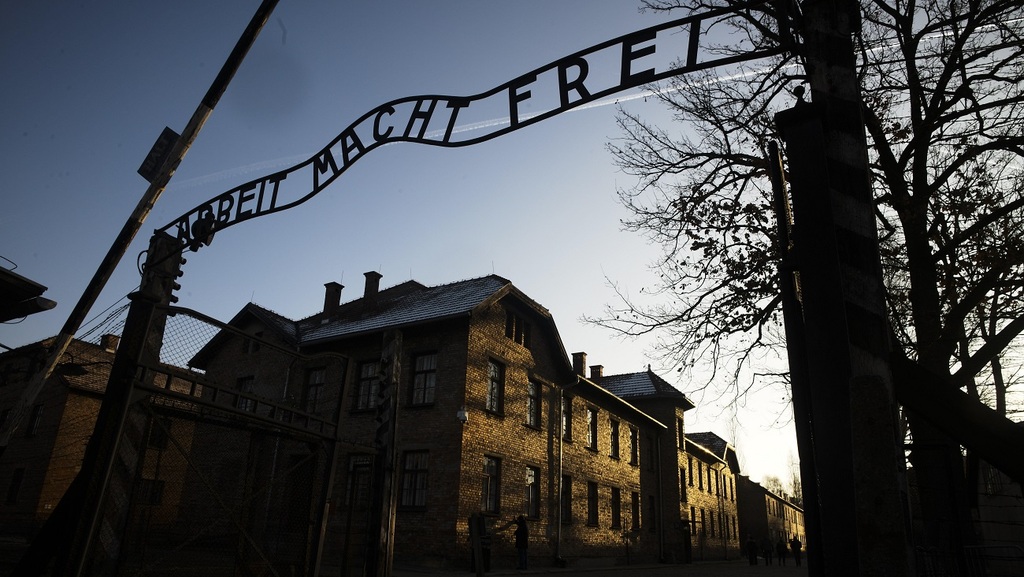Ewa Bazan, an archivist at the Auschwitz-Birkenau Museum, compares her work on newly-accessible records to piecing together a "puzzle" that is revealing new names and stories of the Nazi death camp's inmates.
Ninety percent of the notorious camp's files were destroyed by its guards before they fled but a recently completed two-year collaboration with the Arolsen Archives in Germany is bringing new information to light.
"We didn't know what to expect when we started the project," Bazan told AFP, barely hiding her emotion.
The patient, humble research carried out by Bazan and her colleagues has uncovered the previously unknown identities of an estimated 4,000 camp inmates as well as information about 26,000 others.
Currently, the identities of around 300,000 inmates out of the 400,000 estimated to have been held at the camp are known.
Among the names uncovered by Bazan and her team are those of French resistance fighter and painter Leon Delarbre or the Polish artist Franciszek Jazwiecki, whose chilling portraits of prisoners are on display in the camp museum.
The two painters were at some point transferred from Auschwitz to Buchenwald and it is in the records of that camp, which have been preserved in the Arolsen Archives, that new information about them was found.
5 View gallery
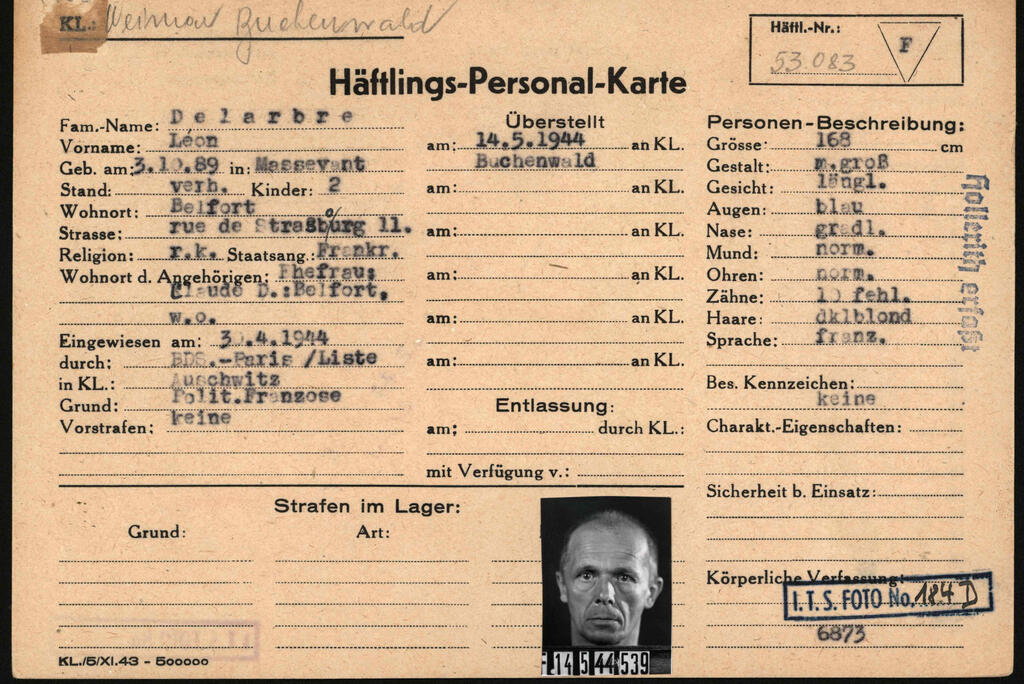

This reproduction shows the prisoner card (Haeftlings-Personal-Karte) of Frenchman Leon Delarbre who was kept imprisoned by the Nazis in the Auschwitz and Buchenwald concentration camps
(Photo: AFP)
Delarbre's file includes a photo, his address in the French city of Belfort, his date of birth, a description of his appearance including his missing teeth and the date he was transferred between the camps.
Delarbre and Jazwiecki both survived the camps but the latter died of tuberculosis a year after being freed.
Krzysztof Antonczyk, head of the museum's digital archive, said that apart from the camp's prisoners, another 905,000 people were brought there and exterminated upon arrival, leaving no records.
5 View gallery
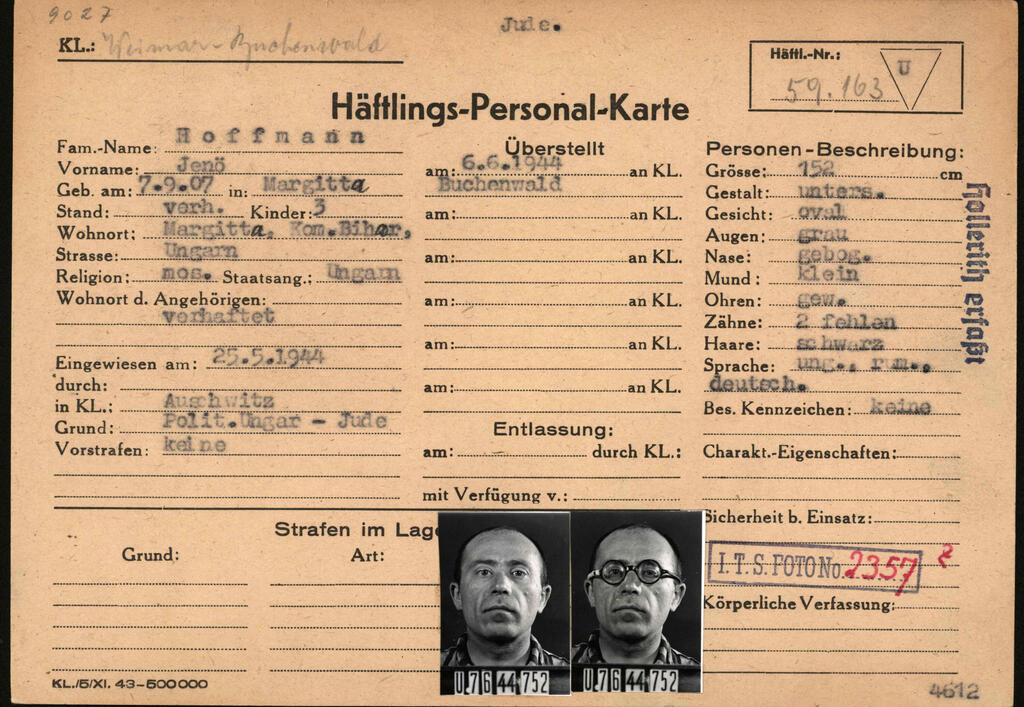

This reproduction shows the prisoner card (Haeftlings-Personal-Karte) of Hungarian Jeno Hoffmann who was kept imprisoned by the Nazis in the Auschwitz and Buchenwald concentration camps
(Photo: AFP)
"Their names sometimes appear only on transport documents that the Nazis were using," he said.
The Arolsen Archives contain around 30 million documents, including the archives of the SS and the Gestapo and records from the concentration camps.
Over the years, they have provided information to the families of former prisoners and they have only been opened up for academic research since 2007.
The files can yield unexpected information.
A single record sometimes contains details about all the members of a prisoner's family -- their names and ages and a mention if they were also held at Auschwitz or another camp, if they died or if they were moved.
"With a single name, we can find out things on other people who we did not know were held at Auschwitz," Bazan said.
5 View gallery
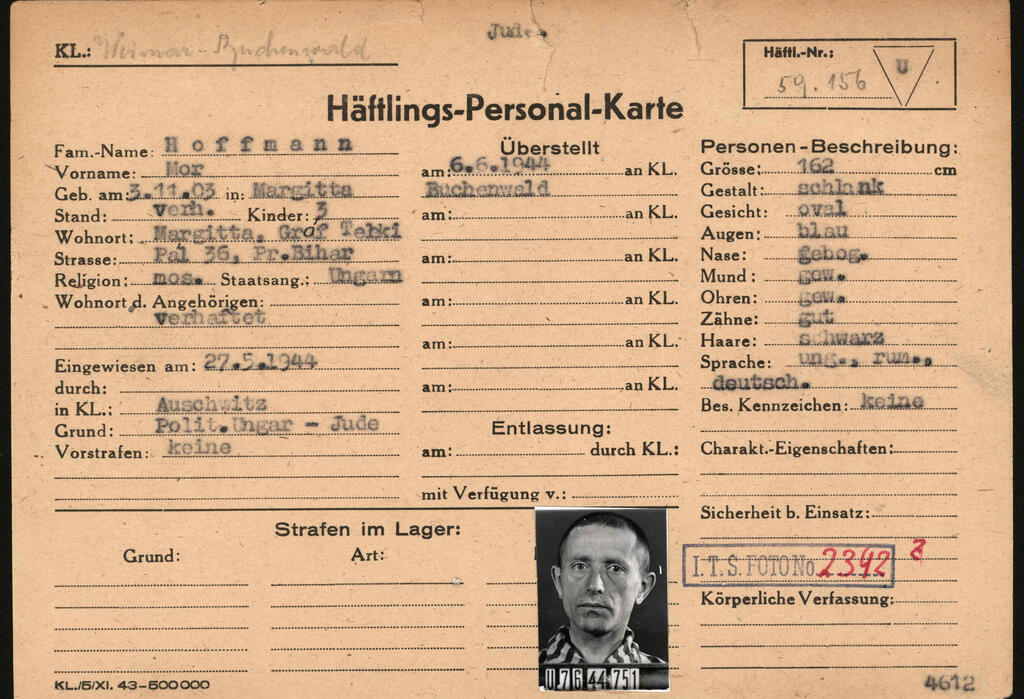

This reproduction shows the prisoner card of Hungarian Mor Hoffmann who was kept imprisoned by the Nazis in the Auschwitz and Buchenwald concentration camps
(Photo: AFP)
A total of 120,000 documents relating to Auschwitz inmates have been digitized as part of the project.
Among the discoveries were many records of Hungarian Jews who were transported to Auschwitz after May 1944 and whose names do not appear in any other archive.
Two of them, brothers Jeno and Mor Hoffmann, were moved from Auschwitz to Buchenwald and back.
Their files contain the names of their parents and their wives, who were all also prisoners.
"Auschwitz is the world's biggest cemetery without any tombs," said Antonczyk, comparing the expanding digital archive to "a sort of epitaph" for the victims.
"We want to establish the identities of as many prisoners as possible," he said.
5 View gallery
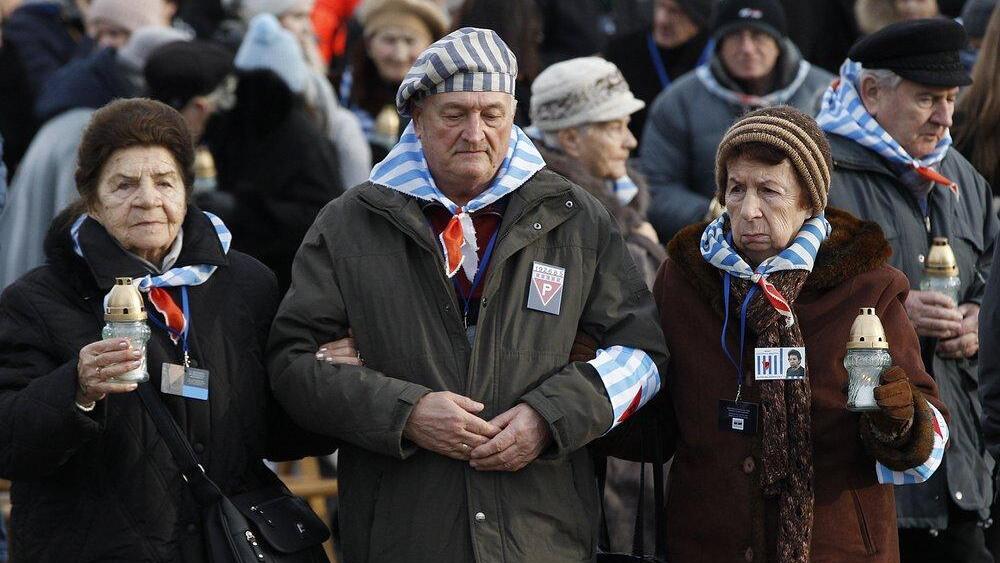

Survivors of the Nazi death camp Auschwitz arrive for a commemoration ceremony on International Holocaust Remembrance Day, Poland
(Photo: AP)
Using databases and digital technology, researchers can now trace the routes taken by prisoners around Europe as they were shuffled around the Nazi camps.
Bazan, who has worked at the museum for 20 years, said the project was "a heartfelt wish" to respond to the thousands of families that contact the museum every year for information about their loved ones.
"Whenever someone comes to see us in the hope of finding out something about their relatives and we cannot help them it is traumatic for us as well.
"The smallest detail is important to relatives," she said, voicing regret that some names "are lost forever".


